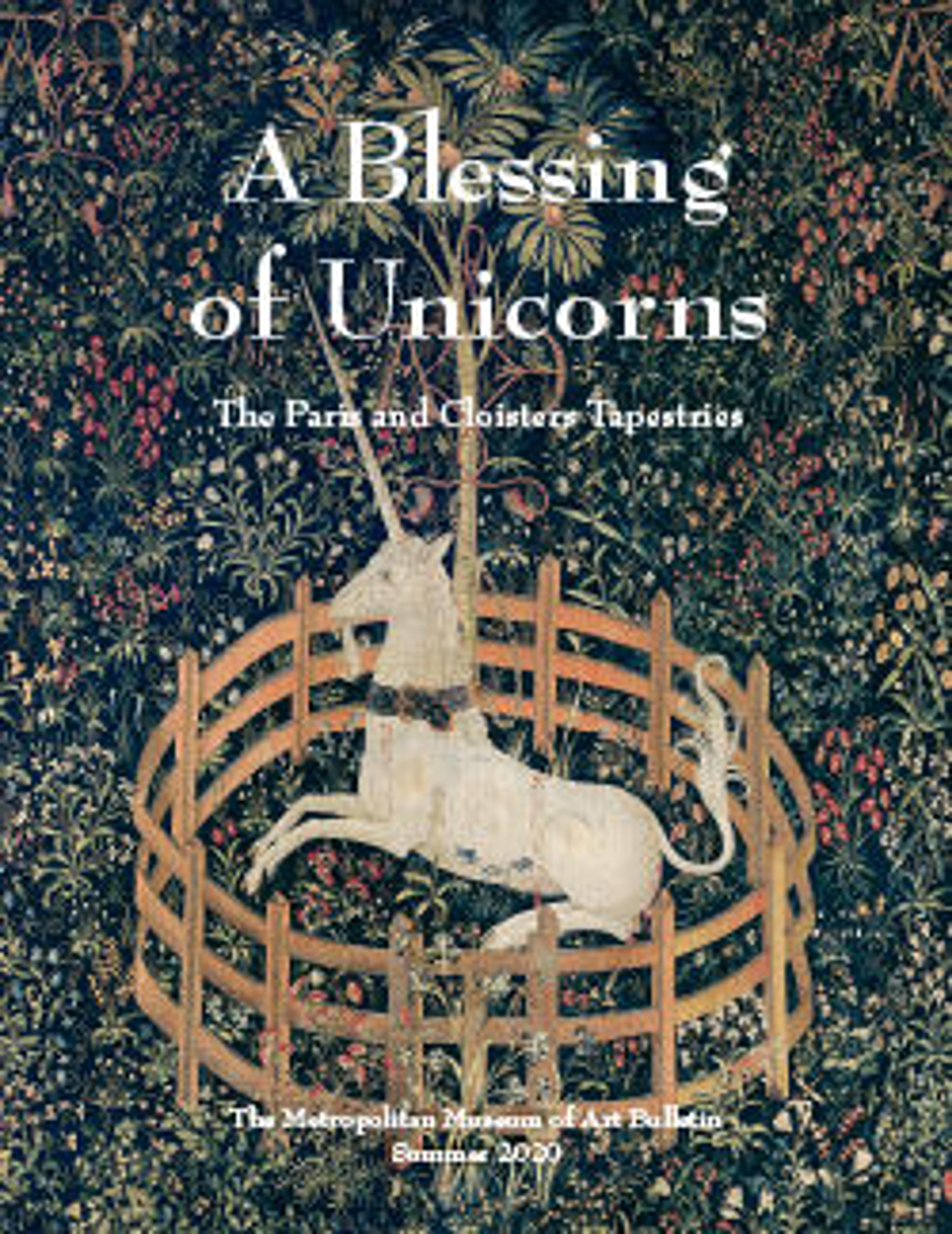The Unicorn Crosses a Stream (from the Unicorn Tapestries)
According to tradition, the unicorn cannot be disturbed while performing a magical act. The attack by the hunters thus presumably begins soon after the action depicted in The Unicorn Is Found, and the scene is one filled with chaos and commotion. The ferocity of the battle is conveyed by the converging lances aimed at the animal, the sounding of the hunting horns, and the menacing hounds. Already wounded on his back, the unicorn leaps across a stream in a desperate attempt to escape his encircling enemies.
The use of hounds to scout, chase, and eventually attack the quarry was typical practice in medieval stag hunts, and the palatial buildings in the background might be a further allusion to the hunt as a royal or aristocratic pastime. Unlike The Hunters Enter the Woods and The Unicorn in Captivity, this and the other hangings are set in realistic landscapes that enhance the drama of the hunt.
The use of hounds to scout, chase, and eventually attack the quarry was typical practice in medieval stag hunts, and the palatial buildings in the background might be a further allusion to the hunt as a royal or aristocratic pastime. Unlike The Hunters Enter the Woods and The Unicorn in Captivity, this and the other hangings are set in realistic landscapes that enhance the drama of the hunt.
Artwork Details
- Title:The Unicorn Crosses a Stream (from the Unicorn Tapestries)
- Date:1495–1505
- Geography:Made in Paris, France (cartoon); Made in Southern Netherlands (woven)
- Culture:French (cartoon)/South Netherlandish (woven)
- Medium:Wool warp with wool, silk, silver, and gilt wefts
- Dimensions:Overall: 145 x 168in. (368.3 x 426.7cm)
- Classification:Textiles-Tapestries
- Credit Line:Gift of John D. Rockefeller Jr., 1937
- Object Number:37.80.3
- Curatorial Department: Medieval Art and The Cloisters
More Artwork
Research Resources
The Met provides unparalleled resources for research and welcomes an international community of students and scholars. The Met's Open Access API is where creators and researchers can connect to the The Met collection. Open Access data and public domain images are available for unrestricted commercial and noncommercial use without permission or fee.
To request images under copyright and other restrictions, please use this Image Request form.
Feedback
We continue to research and examine historical and cultural context for objects in The Met collection. If you have comments or questions about this object record, please contact us using the form below. The Museum looks forward to receiving your comments.
